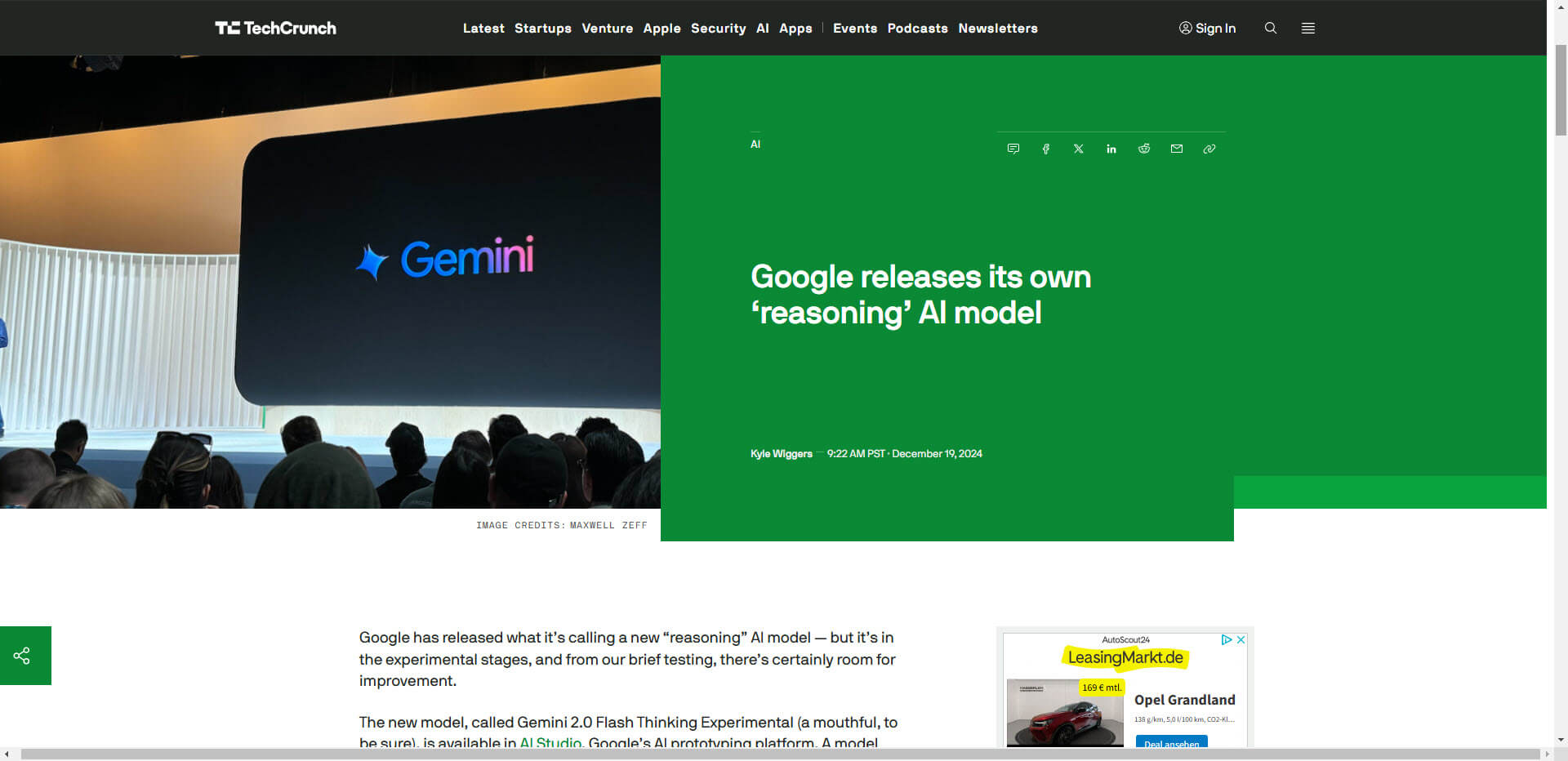As artificial intelligence evolves, it’s no longer just about rapid response times and large-scale data processing. The latest milestone, featured in TechCrunch’s report on December 19, 2024, spotlights Google’s new reasoning AI model—a system designed to “think” before answering. This innovation marks a major shift from generative text completion toward a more interpretive, transparent, and human-like approach to problem-solving.
What Makes the Reasoning AI Model Different?
- Reflective Thought Process:
Traditional AI often rushes to provide answers based on patterns and probabilities. Google’s reasoning AI takes a step back, pondering its inputs and evaluating context before generating a response. - Enhanced Accuracy & Explainability:
By simulating a form of internal reasoning, the model can potentially identify errors or gaps in its logic. This leads to more reliable answers, especially for complex or ambiguous queries. - Cross-Industry Applications:
Whether it’s healthcare diagnostics, financial forecasting, legal research, or educational assistance, reasoning AI could help professionals make better-informed decisions, reduce errors, and improve user trust.
Key Benefits of Reasoning-Based AI
- Contextual Understanding: Models can weigh multiple pieces of information rather than relying on one-size-fits-all outputs.
- Transparency: Users can gain insights into how the model arrived at an answer, fostering trust and facilitating troubleshooting.
- Fewer Hallucinations: By taking time to “think,” the model may reduce the common AI pitfall of confidently providing incorrect information.
Potential Challenges & Considerations
- Computational Costs: The extra steps involved in reasoning can require more computing power, potentially increasing costs.
- Complexity of Training: Teaching an AI to reason isn’t straightforward; it involves refining the model’s training data, architecture, and algorithms.
- Continual Improvement: Early iterations may still struggle with certain tasks, requiring ongoing development and refinement to reach optimal performance.
The Bigger Picture: A Move Beyond Scaling
Google’s entry into reasoning AI reflects a broader industry trend. Rather than just scaling up existing models, innovators are focusing on refining how AI thinks and interprets data. This shift could lead to:
- More Human-Like Interactions: AI that understands nuance, clarifies misunderstandings, and adapts its reasoning.
- Specialized Solutions: Tailored models that excel in specific domains, from medical decision-making to legal analysis.
- New Benchmarks & Metrics: Success may be judged not just by accuracy, but by the quality of the reasoning path and the clarity of the model’s explanations.
Conclusion
Google’s new reasoning AI model is more than just another release—it’s a significant leap toward a future where AI doesn’t merely provide answers, but understands the questions and reasoning behind them. By embracing this approach, we’re moving closer to machines that can act as true partners, helping us navigate complexity, uncertainty, and a rapidly evolving digital landscape.

